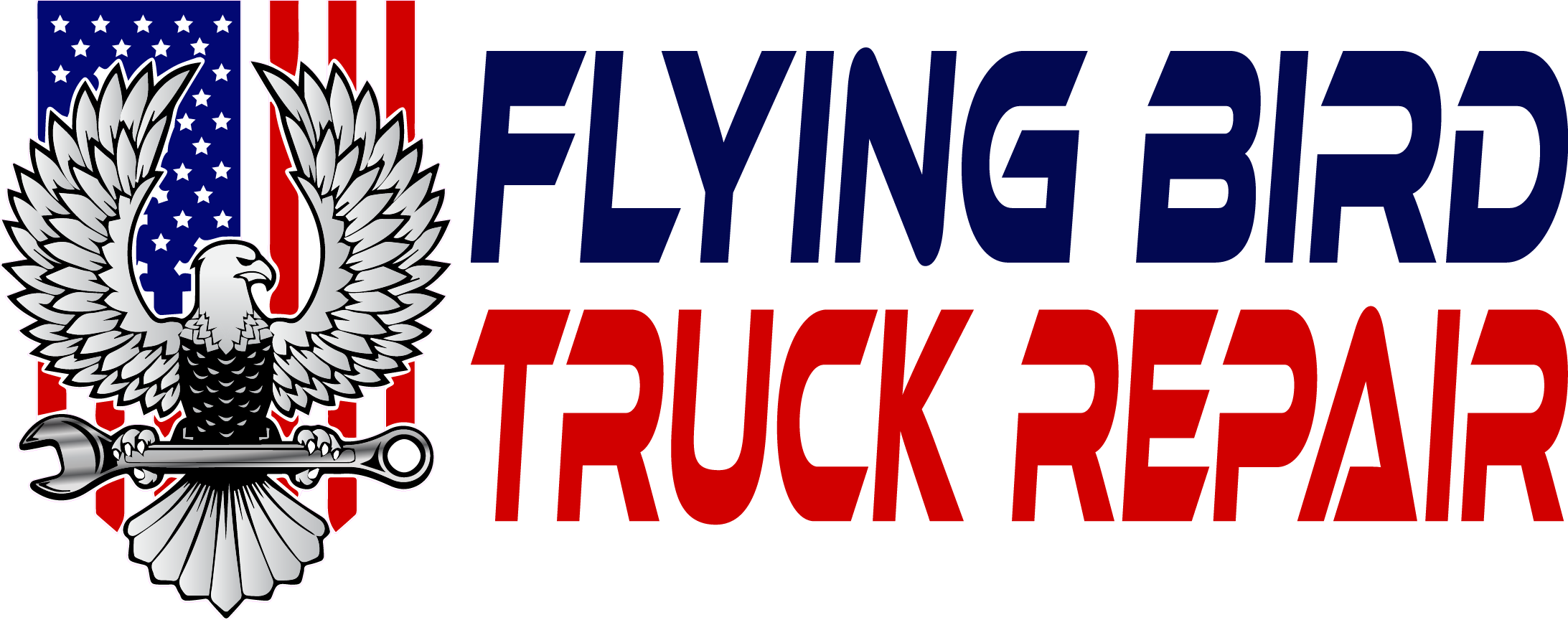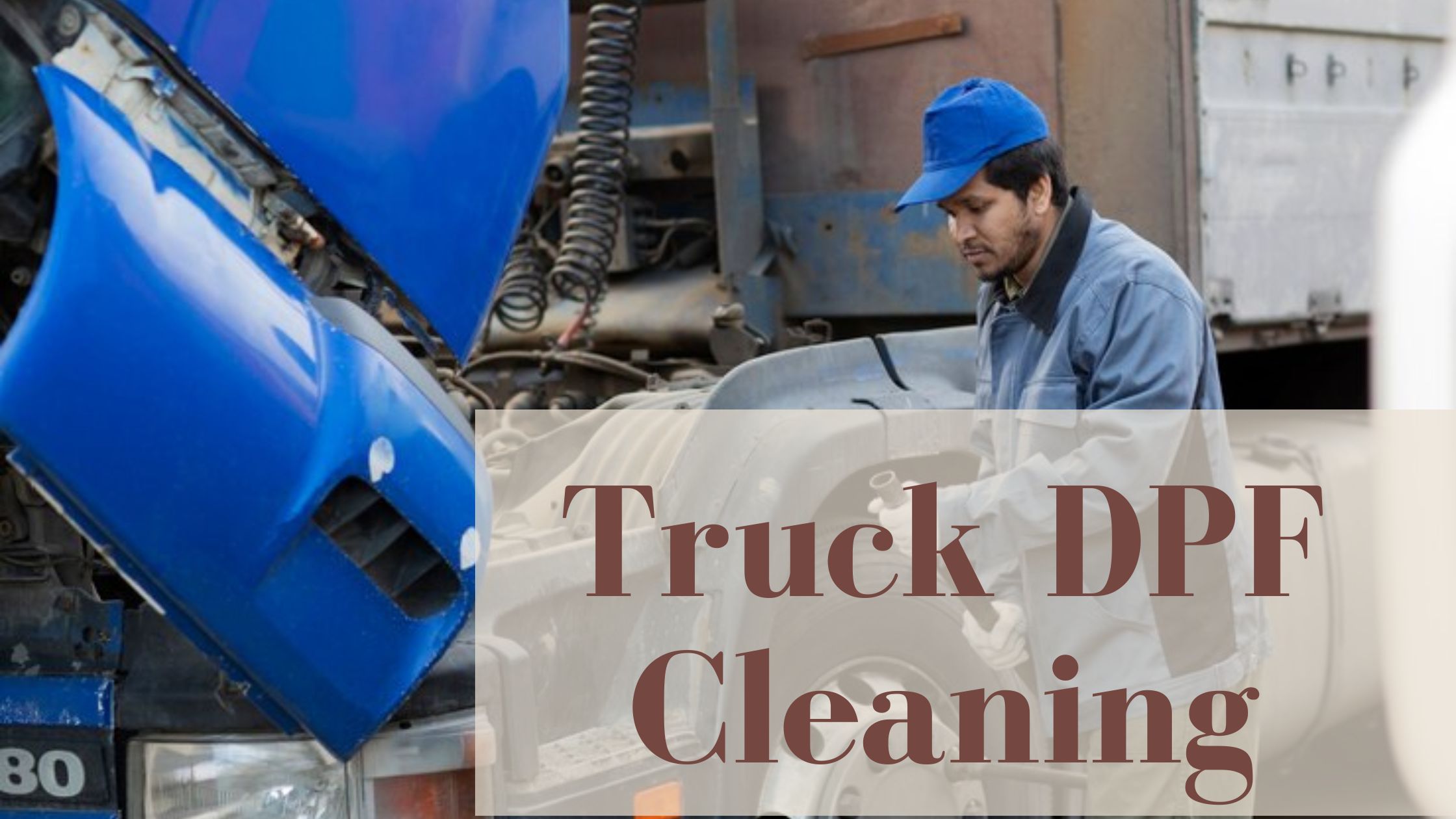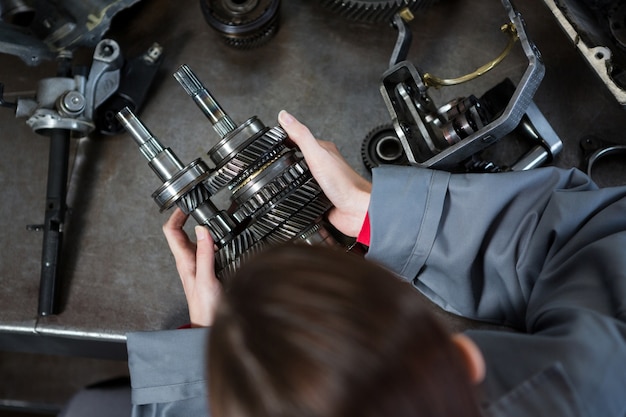Key Highlights
- DPF cleaning plays a crucial role in maximizing fuel efficiency in trucks.
- A clean DPF ensures proper functioning of the diesel particulate filter, which traps and removes harmful pollutants from the exhaust.
- Regular DPF cleaning can improve fuel economy and reduce emissions, benefiting the environment and the truck’s performance.
- Signs that your truck’s DPF needs cleaning include decreased fuel efficiency, increased idle times, and warning lights on the dashboard.
- Neglecting clean the DPF can lead to reduced engine performance, increased fuel consumption, and potential engine damage.
- There are different methods for cleaning DPFs, including manual techniques and professional cleaning services.
Introduction
Diesel Particulate Filters (DPF) play a crucial role in enhancing fuel efficiency in trucks. Understanding the significance of DPF cleaning is essential for truck owners looking to maximize their vehicle’s performance and lifespan. Regular maintenance of DPFs not only ensures clean exhaust systems but also contributes to reducing harmful emissions. By learning more about the cleaning process and its benefits, truck drivers can make informed decisions to optimize their fuel economy and extend the life of their engines.
Understanding DPF in Trucks
Diesel Particulate Filters (DPF) in trucks play a crucial role in reducing harmful emissions by trapping soot and other particulate matter from the exhaust system. This cleaning process improves fuel efficiency and protects the environment. Understanding how DPF functions within a truck’s exhaust system is essential for maximizing fuel economy and maintaining engine performance. By ensuring your DPF is clean and functioning optimally, you can extend the life of your engine and contribute to a cleaner environment.

The Function of Diesel Particulate Filters
Diesel Particulate Filters (DPF) play a crucial role in reducing harmful emissions from trucks by capturing particulate matter in the exhaust system. By trapping soot and harmful particles, DPFs help improve fuel economy and maintain the cleanliness of the engine. This cleaning process ensures that the exhaust gases meet emission standards, promoting a more environmentally friendly operation. Keeping the DPF clean is essential for optimal performance and maximizing fuel efficiency, making it a vital component in every diesel truck.
How DPF Contributes to Fuel Efficiency
Diesel Particulate Filters (DPF) are integral components of trucks, enhancing fuel efficiency by trapping harmful particles in the exhaust system before they are released into the environment. By ensuring a clean DPF filter through regular cleaning processes, trucks can maintain optimal performance levels, leading to improved fuel economy. A well-maintained DPF promotes smooth engine operation, reduces fuel consumption, and minimizes harmful emissions, making it a crucial factor in maximizing the fuel efficiency of diesel trucks. Utilizing DPF cleaning services is a great way to enhance your vehicle’s fuel efficiency and overall performance.
Signs Your Truck’s DPF Needs Cleaning
Decreased fuel efficiency, increased idle times, and warning lights on the dash signify your truck’s DPF needs cleaning. When these signs appear, it’s crucial to address them promptly to maintain optimal fuel economy and engine performance. Ignoring these indicators can lead to increased fuel consumption and potential damage to the engine. Stay ahead of issues by recognizing these signs and scheduling a professional DPF cleaning to ensure your truck operates at its best.
Decreased Fuel Efficiency
When your truck’s DPF becomes clogged, fuel efficiency takes a hit. A blocked DPF restricts exhaust flow, forcing the engine to work harder, burning more fuel. This leads to decreased fuel efficiency, costing you money in extra fuel consumption. By investing in truck DPF cleaning, you can restore your vehicle’s fuel economy, ensuring optimal performance and savings in the long run. Don’t let decreased fuel efficiency slow you down; clean your DPF for improved efficiency and a smoother ride.

Increased Idle Times
One significant indicator that your truck’s DPF needs cleaning is increased idle times. When the DPF becomes clogged with trapped soot and particulate matter, it can restrict airflow, leading to increased engine idling to compensate for decreased performance. Addressing this issue promptly through professional DPF cleaning services can optimize fuel efficiency by ensuring efficient combustion and reducing the need for prolonged idling periods, ultimately saving you time and money while promoting a healthier engine.
Warning Lights on the Dash
When warning lights illuminate on your truck’s dashboard, it could signal a potential issue with the DPF system. These lights often indicate a blocked or malfunctioning DPF filter, leading to decreased fuel efficiency and engine performance. Ignoring these warnings may result in costly repairs and harm to the environment due to increased emissions. Promptly addressing warning lights by scheduling a professional truck DPF cleaning service can ensure optimal performance and fuel economy, extending the life of your engine. Benefit from a clean DPF with improved efficiency and reduced harmful emissions.
The Impact of Not Cleaning DPF on Trucks
Neglecting to clean the Diesel Particulate Filter (DPF) in trucks can result in reduced engine performance and increased fuel consumption. The accumulation of soot and harmful particles from exhaust gases can lead to costly engine damage over time. By overlooking DPF maintenance, trucks may experience a decline in fuel efficiency and an increase in harmful emissions. Regular cleaning is crucial to ensuring the longevity and optimal performance of a vehicle’s engine. Don’t underestimate the benefits of a clean DPF in preserving the health and efficiency of your truck.
Reduced Engine Performance
If left unchecked, a neglected DPF can lead to reduced engine performance, compromising the truck’s overall efficiency and power output. A clogged DPF restricts the exhaust flow, causing back pressure that can harm the engine. By ensuring timely DPF cleaning, you safeguard your engine’s performance and longevity, enhancing fuel efficiency and minimizing the risk of costly repairs. Don’t underestimate the impact of a clean DPF on the health and efficiency of your truck’s engine.
Increased Fuel Consumption
When a truck’s DPF is not cleaned regularly, it can lead to a significant increase in fuel consumption. A clogged or inefficient DPF restricts proper airflow, causing the engine to work harder and burn more fuel to compensate. This added strain on the engine directly impacts fuel efficiency, resulting in higher fuel costs. By investing in professional DPF cleaning services or utilizing DIY cleaning techniques, you can effectively reduce fuel consumption and maximize your truck’s performance and fuel economy.
Methods for Cleaning DPF in Trucks
Manual DPF cleaning techniques or professional DPF cleaning services are effective methods for maintaining peak performance. Consider DIY for convenience, with benefits of expert care highlighted in professional services. Whether opting for chemical cleaners or physical methods, ensure your truck’s DPF is efficiently cleaned for optimal fuel efficiency and extended engine life. Trust in thorough cleaning processes to remove trapped soot, improving your vehicle’s overall performance and reducing harmful emissions.
Manual DPF Cleaning Techniques
When it comes to manual DPF cleaning techniques, there are various methods that can be employed to ensure the efficacy of the cleaning process. Techniques such as using compressed air for thorough cleaning, manual removal of the DPF for more direct access, and careful inspection of the filter for any signs of damage are all essential aspects of manual DPF cleaning. By following these techniques diligently, you can maintain optimal performance and fuel efficiency for your truck while extending the life of your DPF.
Professional DPF Cleaning Services
When it comes to ensuring optimal performance of your truck’s diesel particulate filter (DPF), professional cleaning services play a crucial role. Professional DPF cleaning services utilize advanced techniques and equipment to thoroughly clean the DPF filter, removing accumulated soot and particulate matter. By opting for professional services, you can maximize the efficiency of your truck’s DPF, leading to improved fuel economy and reduced emissions. Trusting professionals for DPF cleaning ensures a comprehensive approach that enhances the longevity and effectiveness of your vehicle’s emission control system.
Chemical Cleaners vs. Physical Cleaning Methods
When it comes to cleaning a DPF, there are two main options: chemical cleaners and physical cleaning methods. Chemical cleaners are additives that are poured into the fuel tank, where they circulate through the engine and help clean the DPF. These cleaners work by breaking down the soot and ash that accumulates in the filter, making it easier to remove.
On the other hand, physical cleaning methods involve removing the DPF from the exhaust system and using specialized equipment to clean it. This can include techniques such as compressed air, thermal cleaning, or aqueous cleaning. These methods are more thorough and can remove stubborn deposits that chemical cleaners may not be able to fully address.
Both options have their advantages and disadvantages. Chemical cleaners are convenient and can be used as part of regular maintenance, but they may not be as effective for heavily clogged filters. Physical cleaning methods provide a more thorough cleaning but may require professional assistance and can be more time-consuming and costly.
DIY vs. Professional DPF Cleaning
When it comes to DPF cleaning, truck owners have the option to do it themselves (DIY) or seek professional assistance. DIY DPF cleaning can be a cost-effective solution for truck owners who have the necessary knowledge and equipment. It involves following the manufacturer’s guidelines and using appropriate cleaning methods.
On the other hand, professional DPF cleaning services offer several advantages. They have specialized equipment and expertise to ensure a thorough cleaning process. Professional cleaning services can also provide additional benefits such as money-back guarantees and the assurance that the cleaning is done correctly. Truck owners can contact professional cleaning services and schedule an appointment for a hassle-free and effective DPF cleaning.
When to Consider DIY DPF Cleaning
DIY DPF cleaning can be a great way for truck owners to save money and take control of their maintenance schedule. If you have the necessary knowledge and equipment, DIY cleaning can be a straightforward process. It allows you to clean your DPF at your convenience and avoid the hassle of scheduling appointments with professional cleaning services.
However, it’s important to consider your personal abilities and limitations before attempting DIY DPF cleaning. If you’re not familiar with the cleaning process or lack the necessary equipment, it may be best to seek professional assistance. Improper cleaning can damage the DPF or result in incomplete cleaning, which can lead to engine performance issues and increased fuel consumption.
If you’re confident in your abilities and have access to the necessary tools, DIY DPF cleaning can be a cost-effective option. Just make sure to follow the manufacturer’s guidelines and take all necessary precautions to ensure a successful cleaning process.
Benefits of Professional DPF Cleaning Services
Professional DPF cleaning services offer several benefits that make them a preferred choice for many truck owners. First and foremost, professional cleaning services have the expertise and specialized equipment to ensure a thorough and effective cleaning process. They are familiar with different cleaning methods and can tailor the process to your specific DPF and cleaning needs.
Additionally, professional cleaning services often provide guarantees, including money-back guarantees, to give you peace of mind. If you’re not satisfied with the results or if the cleaning is not done properly, you can rely on the service provider to rectify the issue or refund your money.
Furthermore, professional cleaning services can offer additional services such as DPF inspection and maintenance tips to help you maximize the lifespan of your DPF. They have the knowledge and experience to identify any potential issues and provide recommendations for preventive measures.
When considering professional DPF cleaning services, it’s important to research and choose a reputable service provider. Look for reviews and recommendations, and don’t hesitate to ask for references or their phone number to discuss your specific needs.
Preventive Measures to Keep Your DPF Clean
In addition to regular DPF cleaning, there are several preventive measures truck owners can take to keep their DPF clean and optimize fuel efficiency. Regular maintenance is key, including following the manufacturer’s recommended maintenance schedule and using high-quality fuel and lubricants.
Truck drivers can also adopt best practices to minimize DPF clogging. This includes avoiding short trips that don’t allow the engine to reach optimal operating temperature, using regular diesel instead of biodiesel, and avoiding excessive idling. Additionally, thermal cleaning can be beneficial, as it raises the exhaust temperature and promotes the automatic regeneration process, which helps in cleaning the DPF.

By implementing these preventive measures, truck owners can reduce the frequency of DPF cleaning and improve fuel economy. It’s important to prioritize regular maintenance and follow best practices to ensure the longevity and effectiveness of the DPF.
Regular Maintenance Tips
Regular maintenance of your truck’s DPF is crucial to maximize fuel efficiency. One of the key maintenance tips is regular cleaning of the DPF. This can be done through passive regeneration, which occurs naturally while driving at high speeds for extended periods, allowing the exhaust gases to reach high temperatures and burn off accumulated soot. Active regeneration is another method that involves the vehicle’s engine control unit initiating the cleaning process by injecting additional fuel into the exhaust system to raise the temperature and burn off trapped soot. It’s important to follow the manufacturer’s instructions for the frequency of cleaning and regeneration cycles. By regularly maintaining and cleaning the DPF, you can prevent clogging and ensure optimal fuel efficiency.
Best Practices for Truck Drivers
Truck drivers can play a vital role in maintaining a clean DPF and maximizing fuel efficiency. One of the best practices is to avoid frequent short trips, as these may not allow the exhaust gases to reach high enough temperatures for effective regeneration. Additionally, using regular diesel instead of biodiesel or fuel additives can help prevent DPF clogging. Consider thermal cleaning if your DPF has become heavily clogged and passive or active regeneration is not sufficient. Thermal cleaning involves heating the DPF to high temperatures in a specialized oven to evaporate and oxidize built-up soot and particulates. By following these best practices, truck drivers can ensure a clean DPF and improve fuel efficiency in their vehicles.
Conclusion
Maintaining a clean Diesel Particulate Filter (DPF) in your truck is crucial for optimal fuel efficiency. Regular cleaning can prevent decreased fuel efficiency, increased idle times, and warning lights on the dash. Neglecting DPF cleaning can lead to reduced engine performance and increased fuel consumption. Consider professional DPF cleaning services from the trusted Bakersfield Truck Repair services providers for best results. Remember, preventive measures such as regular maintenance and following best practices can keep your DPF in top condition, ensuring peak fuel efficiency for your truck. Prioritize DPF cleaning to maximize fuel efficiency and extend the lifespan of your truck’s engine.
Frequently Asked Questions
How Often Should DPF be Cleaned in Trucks?
The frequency of DPF cleaning in trucks depends on various factors. Generally, DPFs should be professionally cleaned every 120,000 to 200,000 miles or every six to 12 months. However, it also depends on the truck’s usage, the number of regeneration cycles, and the overall life of the DPF. Regular cleaning ensures optimal fuel consumption and prevents issues caused by a clogged DPF.
Can I Clean DPF Myself or Should I Seek Professional Help?
While it’s possible to clean a DPF yourself, it’s recommended to seek professional help for thorough and safe cleaning. Professional DPF cleaning ensures the removal of harmful particles and proper restoration of the DPF’s performance. Improper DIY cleaning can damage the DPF and negatively impact engine performance. Professional technicians use specialized cleaning devices and ensure that the DPF meets EPA standards.
What Are the Long-Term Benefits of Regular DPF Cleaning?
Regular DPF cleaning offers several long-term benefits. It improves fuel efficiency by maximizing the DPF’s effectiveness in trapping and removing harmful particles. It also extends the life of your engine by preventing issues caused by a clogged DPF. Additionally, regular cleaning reduces harmful emissions, contributing to a cleaner environment.














